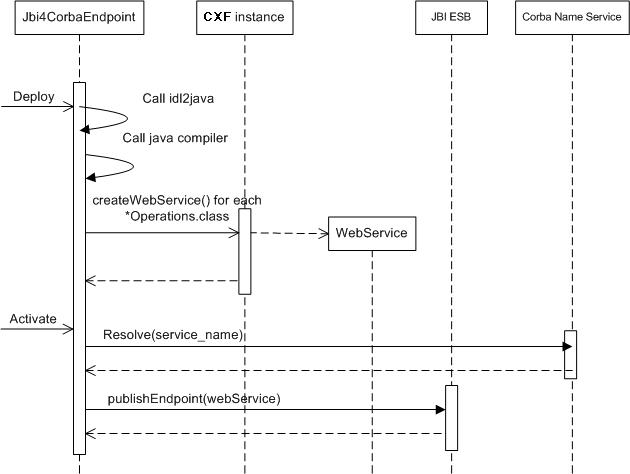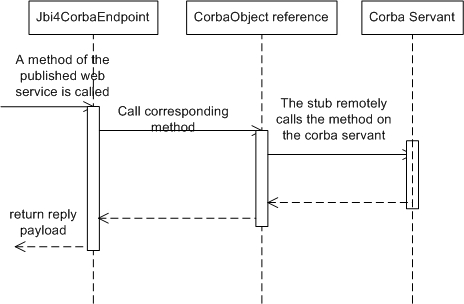Provider - Architecture
Jbi4Corba, when run in provider mode, is based on this simple pseudo equation: idj2java + java2wsdl = idl2wsdl.
From the architectural point of view, we analyze two different phases: the deploy and the runtime.
At deploy time the following sequence of events occurs:
- The IDL file is parsed and used to generate the java classes. (To verify which IDL's features are supported please visit the page of the supported IDL data types).
- Generated java classes are compiled.
- One JBI web service per idl interface is created.
- When the endpoint is activated the underlying corba object is located using the Corba name service.
- Each JBI Web service is published as an internal JBI endpoint.
The following (unformal) sequence diagram shows this process:

At runtime the following sequence of events occurs:
- The JBI internal endpoint is called by another JBI endpoint.
- The CXF dynamic interface and the Corba dynamic interface are used together to forward any port called on the web service to the corresponding corba method.
- The result is marshalled into the reply payload.
- The reply payload is posted into the JBI bus.
The following figure shows this process in an unformal sequence diagram:




